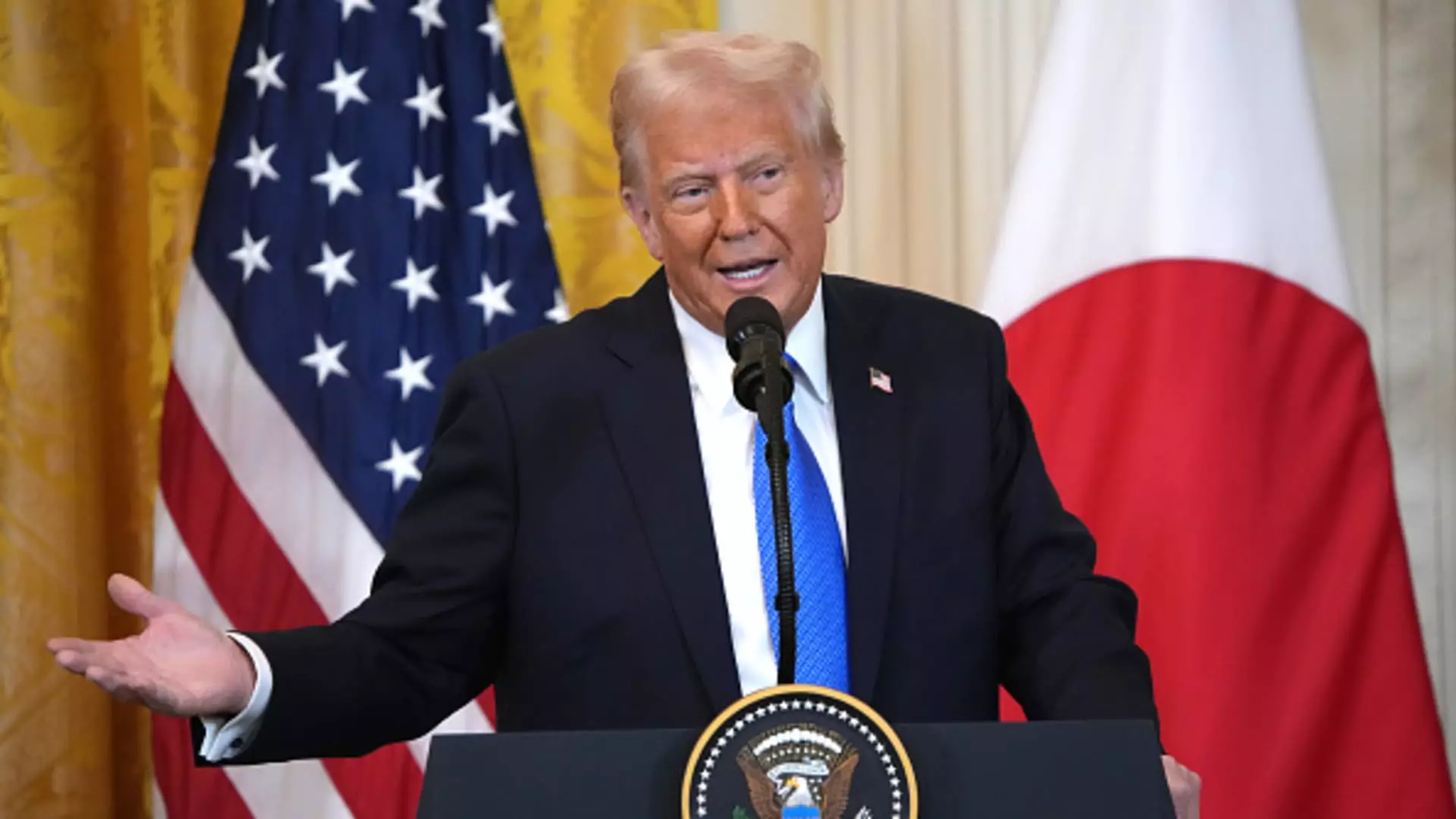President Donald Trump’s recent announcement of a sweeping trade agreement with Japan has garnered widespread attention, but beneath the hype lies a complex web of implications that demand critical scrutiny. While Trump touts this deal as one of the “largest ever made,” the reality appears far more nuanced. It’s vital to examine not just the surface-level benefits he claims—such as massive investments and job creation—but also the potential pitfalls that such a deal could harbor, especially amid fragile geopolitical and domestic political landscapes.
At its core, this agreement signals a delicate dance between economic pragmatism and political spectacle. On one hand, a lower auto tariff to 15% from 25% could provide immediate relief to Japan’s auto industry, which faces steep declines in exports to the U.S. market—declines that have already seen shipments drop sharply. On the other hand, these tariffs, even at 15%, still serve as barriers that distort fair competition and could set a dangerous precedent for future trade negotiations. Are we truly fostering free trade, or simply reshuffling tariffs under the guise of cooperation?
President Trump’s claim that Japan would “invest $550 billion” and that the U.S. would “receive 90% of the profits” sounds impressive—if it stands up to rigorous analysis. It’s rare that such bold figures materialize without nuances, and with so many moving parts, the actual economic benefit for the American worker remains speculative at best. Moreover, the promise of “creating hundreds of thousands of jobs” echoes Trump’s usual bravado, but it’s important to remember that trade deals often have mixed effects—sometimes benefiting large corporations more than everyday citizens.
The political timing of the deal adds another layer of complexity. Japan’s recent electoral setbacks, including the governing coalition losing its majority, suggest that Prime Minister Ishiba might be leveraging this deal as a political shield. Historically, trade deals have been used as tools to bolster leadership legitimacy—yet, with Japan’s domestic struggles, this arrangement could be a temporary salve rather than a strategic long-term victory.
Furthermore, the broader consequences of such protectionist gestures are concerning. While easing tariffs on autos may seem like rational economic diplomacy, it risks fueling a global race to the bottom where trade policies are dictated more by political expediency than by long-term economic sustainability. Such deals could undermine efforts toward genuinely fair and reciprocal trade, replacing nuanced negotiations with short-term political wins.
Amid this, the market reactions tell an optimistic story—auto manufacturers soaring by double digits—yet it’s essential to recognize that stock market gains are often short-lived, driven by hope and speculation, rather than real economic transformation. Disruptions in global supply chains, shifts in consumer behavior, and diplomatic tensions could easily undo these gains.
Trump’s indication of additional deals involving natural gas and Europe underscores a pattern of transactional diplomacy—where large, impressive announcements mask underlying uncertainties. Without concrete details, these promises seem more like political theater than substantive policy shifts. The danger lies in complacency: investors and policymakers might assume stability and confidence are secured, without appreciating the fragile underpinnings of these agreements.
Ultimately, this deal exemplifies the complex reality facing center-left liberalism in a polarized world. While advocating for fair trade and equitable economic growth, liberals are often caught between protecting domestic interests and engaging with global partners. Trump’s approach, characterized by aggressive bargaining and populist rhetoric, may threaten the delicate balance needed for sustainable trade policies. As such, the gamble may overestimate short-term gains while underestimating long-term risks—a perilous path that could leave both nations exposed to future economic and political shocks.

Leave a Reply